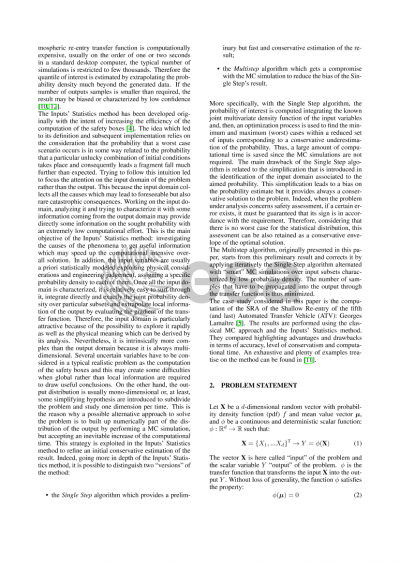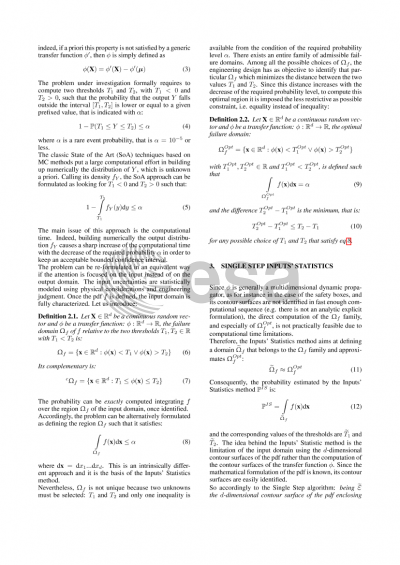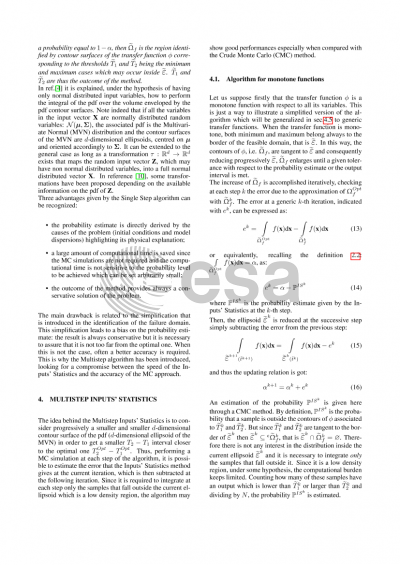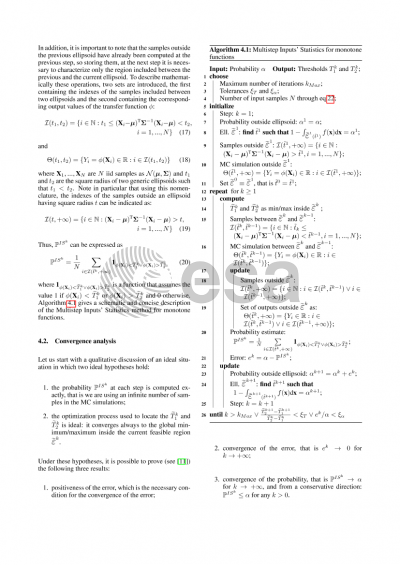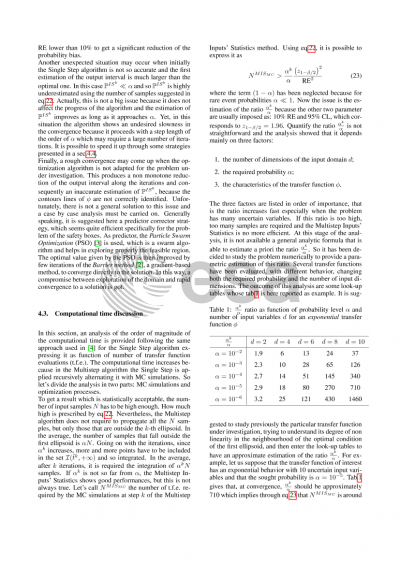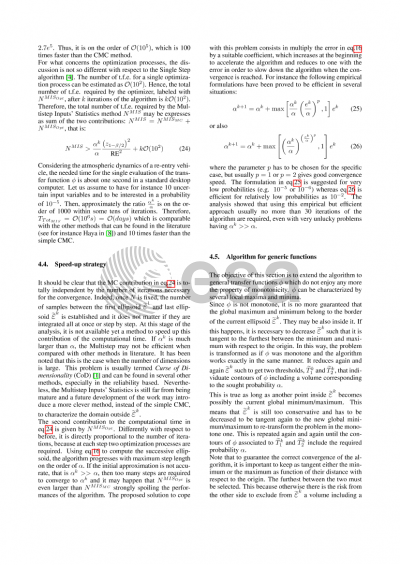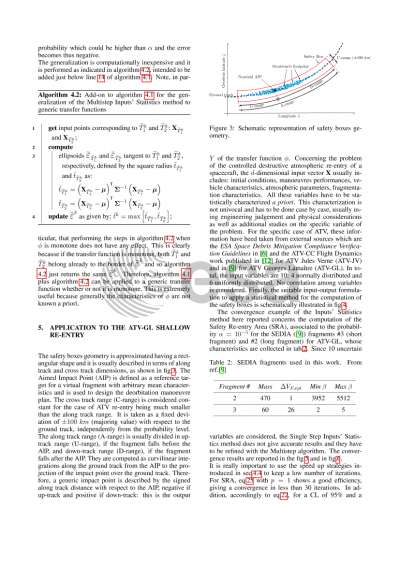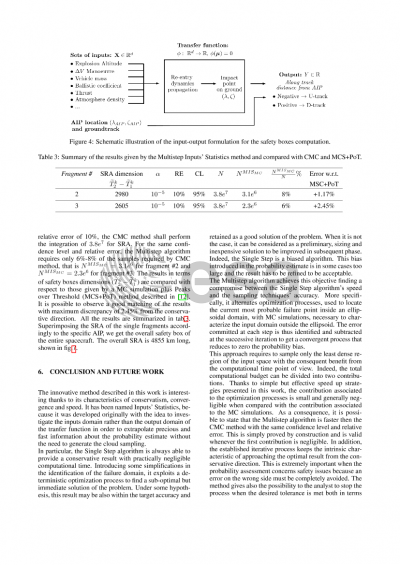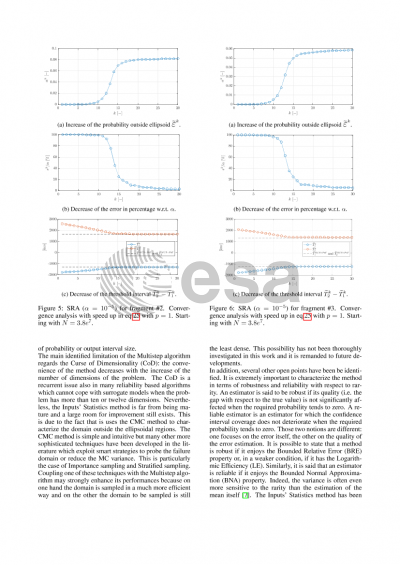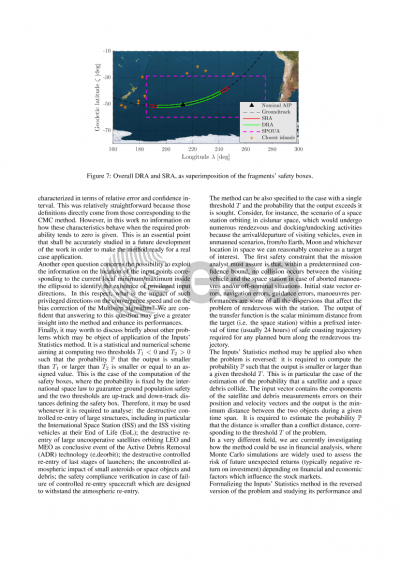Document details

Abstract
The risk reduction measures required for the re-entry back on Earth of a spacecraft are regulated by stringent international requirements. According to the European Space Agency guidelines, the Safety Re-entry Area (SRA) shall delimit the area where the debris surviving the atmospheric entry are enclosed with a probability of 99,999%. Because of the extremely low probability level of interest (10^-5) and the large number of uncertain parameters, linked to
• the fragmentation process,
• the trajectory model,
• the initial conditions of the arc hitting the atmosphere,
calculating accurately such probability is a challenge, both in terms of the required data and the computational effort to translate those data into a probability estimate. Nevertheless, the events corresponding to the failure domain have consequences so catastrophic that their identification is strictly necessary in a reasonably short time to be able to prevent any risk for the population, air and naval traffic, and ground and sea assets. In addition, the computation of SRA is required for a significant number of space missions like spacecraft in low Earth orbits at their end of life and last stages of launchers that shall be controlled to a destructive re-entry. Developing an efficient algorithm able to cope with such complex problems is therefore of crucial importance in all these situations.
This paper describes an innovative method, called Inputs' Statistics, which has been proven very promising in this perspective. It has been distinguished in two ‘’versions’’:
• the Single Step algorithm, which provides a preliminary but fast and conservative estimation of the result;
• the Multistep algorithm, which gets a compromise with the Monte Carlo simulation to reduce the bias of the Single Step's result.
More specifically, with the Single Step algorithm, the probability of interest is computed integrating the known joint multivariate density function of the input variables and, then, an optimization process is used to find the minimum and maximum (worst) cases within a reduced set of inputs corresponding to a conservative estimation of the probability.
Three advantages can be recognized:
1. the probability estimate is directly derived by the causes of the problem (initial conditions and model dispersions) highlighting its physical explanation;
2. a large amount of computational time is saved since the Monte Carlo simulations are not required;
3. the level of probability can be set arbitrarily small without having any impact on the computational time because it is not sensitive to the probability level to be achieved.
The main drawback of Single Step algorithm is related to the simplification that is introduced in the identification of the failure domain. This simplification leads to a bias on the probability estimate but it provides always a conservative solution to the problem. The Multistep algorithm starts from this preliminary result and corrects it by applying iteratively the Single Step algorithm alternated with ‘’smart’’ Monte Carlo simulations over input subsets characterized by low probability density. The number of samples that have to be propagated into the output through the transfer function is thus minimized.
The paper presents the results of the computation of the shallow re-entry SRA performed using the classical Montecarlo approach and this innovative approach. The results are compared highlighting advantages and drawbacks in terms of accuracy, level of conservatism and computational time.
The Inputs’ Statistics method is therefore suitable for many future applications taking advantage of its computational speed and reliability: the destructive controlled re-entry of large structures, including in particular the International Space Station (ISS) at its End of Life (EoL) disposal and the ISS visiting vehicles at its End of Life (EoL); the destructive re-entry of large uncooperative satellites orbiting LEO and MEO as conclusive event of the Active Debris Removal (ADR) technology; the destructive controlled re-entry of last stages of launchers.
Preview

